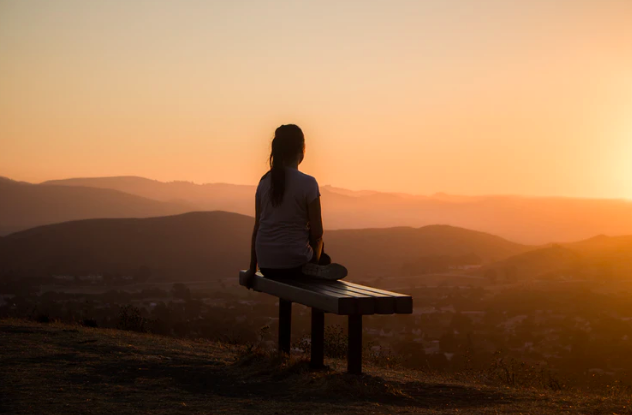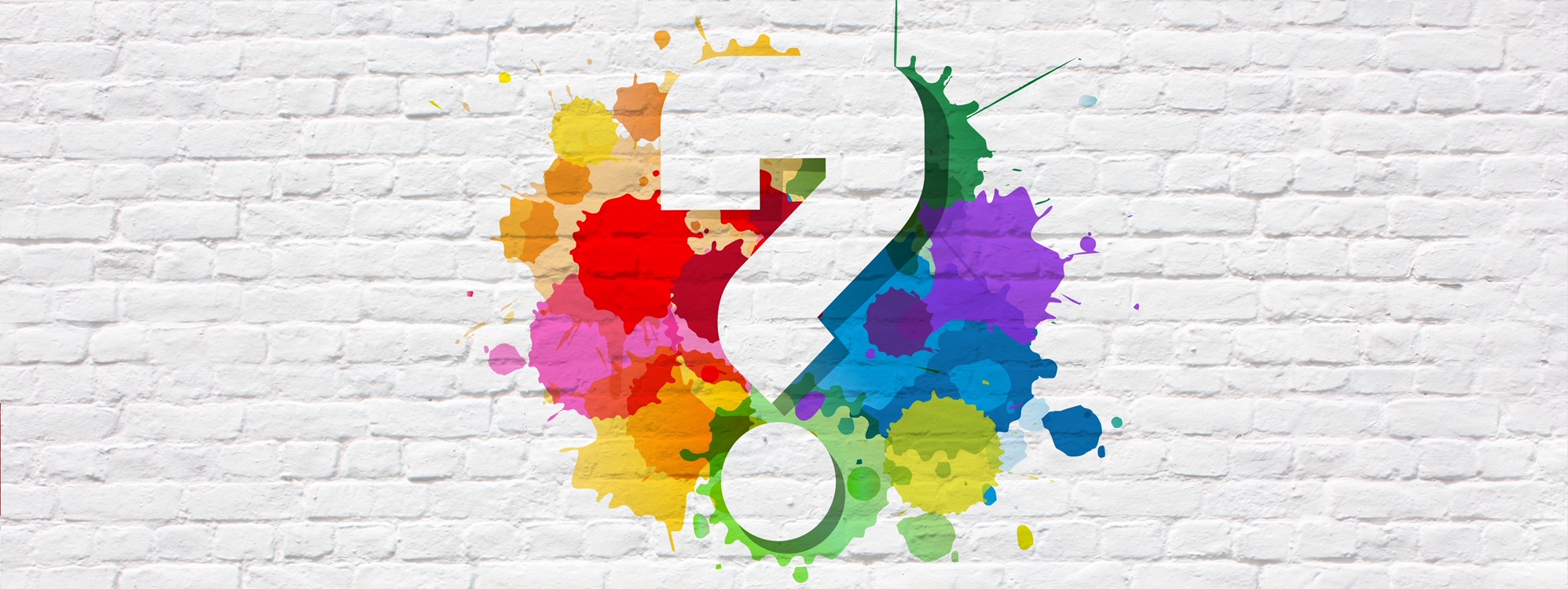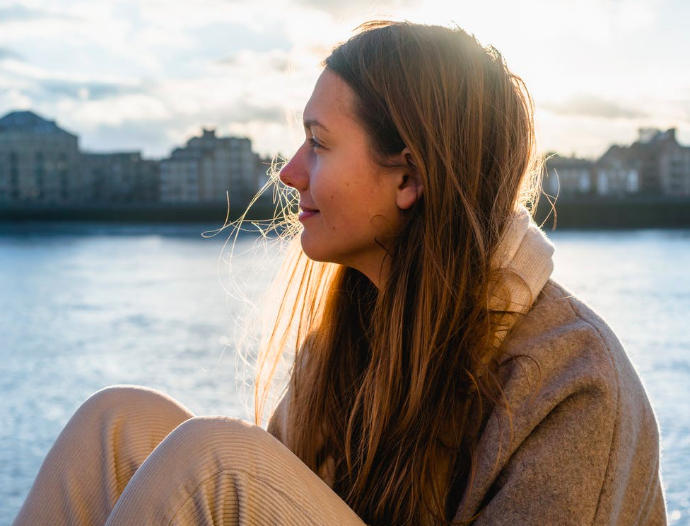“I Don’t Know” is Brave

“I don’t know” is a brave answer.
“I don’t know” can be a brave state of being when we invite ourselves to sit on the fence of confusion for a time.
Not a hesitant, I don’t know. An honest I don’t know. A bold, a definitive, “I don’t know” is a genuine response. The “I don’t know” when we’re unsure about what to do, when we’re confused, or need more time before we truly understand our feelings and move forward.
Not the “I don’t know what to order” at dinner. I’m speaking of the larger, disruptive “I don’t knows” regarding decisions we must make in our daily lives. For example, when we’re uncertain if we should take action and commit to a long-term relationship, or if we’re unclear whether we love someone anymore. The uncertainty we wrestle with when we are no longer at peace in our homes, at our jobs, with our business partners, or in our religions or churches, and are grappling with the question of leaving or staying. The “what should I do, and how” questions needing solutions.
“I don’t know” is an unsettling allowance we must sometimes give ourselves in order to eventually arrive at the answer. In my life, when I’ve accepted the uncomfortable but temporary phases of not-knowing, they have led me into greater solidity once the clarity did come.
“Not Now,” “Not Yet,” and “No”
“Not now,” “not yet,” and “no” are companions of “I don’t know.” They are boundaried statements allowing us to sit on the fence of uncertainty, where we sometimes find ourselves, with greater compassion for our experience. Embracing uncertainty and learning to become more comfortable with it leads us into mature living, and authentic being-ness.

Saying “I don’t know” is a form of standing in our truth, instead of avoiding or denying the discomfort of uncertainty.
This may seem elementary. Yet many of us are so uncomfortable with the discomfort of our struggles that we become more anxious, more depressed, and more fearful because we don’t allow uncertainty. Uncertainty is okay. It’s normal. It is an intermediary state, guarding us from plunking ourselves in the faux-ok-box, where many people prefer us to be for their own comfort. Yet because these states and statements can cause tension, making us feel we’re tired or carrying a burden, creating that sense of a “pit in our stomachs,” and are very disruptive for us and others, they’re hard to say at times. I encourage you to nudge yourself and say them anyway. They are small words yet big steps in everyday bravery.
Somatic Experiencing
As a psychotherapist, I often hold space for my clients as they sit with their uncomfortable emotions. This is part of getting to the answers they seek, pausing and experiencing whatever Is. Walking alongside them, I feel deep empathy for their confusion, pain, or whatever their feelings are. In somatic experiencing (SE), a style of therapy I often use, I encourage them to express what exists in their body, making it “bigger.” For example, if they’re torn up by the confusion of “I don’t know” and there’s tightness in their upper chest with heaviness in their neck, they might lean back in their chair, dangling arms down, arching their back, tilting head back, opening up their heartspace. Leaning into an emotion like this, literally, they welcome the feeling and exaggerate their experience of it. Asking, “what does it need now?” they may swing their arms in small circles, and roll their neck. Their bodies lead the way through discomfort and into new awareness.
I might ask my client to close their eyes and give the yukkiness they feel a color, or make a sound that expresses it. They might see brown clouds, for example, and groan or growl. The yukkiness finds expression, as in the process of painting or creating an art piece. Consciously breathing into their confusion, then exhaling deeply, the emotion takes on a life of its own, feeling “seen” and “heard,” like a hurting child feels when we simply listen to their sadness. Tightness dissipates a bit, and their body and heart find some ease.
After some time, after whatever other movements are called forth, there is a sense of completion, and they may smile or even laugh. I’ll join in, and together in that shared space, something new has emerged. Their perspective may change, colors may look more vivid, and they usually feel a shift of lightness in their bodies. More freedom and relief arrive where there was formerly pain or tightness.

Stay with the Yukkiness
By tapping into the yukkiness we feel, going into the muck instead of avoiding or stuffing it, it can actually move through us more freely. We get out of our cognitive processing, freeing ourselves from ruminations, going beyond our thoughts and into our hearts and bodies. Answers eventually come to us naturally, organically, from a whole-body place of knowing, not just from our minds. Everyday bravery means embodying where we truly are, staying with, not running away from ourselves. We can manifest our hopes, arriving at greater peace, contentment and even happiness when we have been kind to our confusion, allowing our fears. Over time, we are less afraid of fear, and even fear becomes a familiar consultant and companion. The more we learn to stay with any emotion, the greater capacity we have for flexibility, adaptability and resilience in our lives.
Where am I going? I don’t quite know
Our society encourages us to be “fine,” to be “okay,” and to say so when asked how we are doing. We can kindly break free from the norm of “fine” with a gracious, uncertain,” “I don’t know how I’m doing yet.” Here, we live in the realm of A.A. Milne, Winnie the Pooh’s creator. In his poem, Spring Morning, he wrote: “Where am I going? I don’t quite know. Anywhere, anywhere I don’t know.” If we don’t ask ourselves hard questions, and grapple at times, struggling with the answers, we can too-easily arrive at an answer we later regret.
Certainty comes from embodying whatever is real, not by forcing ourselves into a mold of trying to be someone we’re not by doing something that is not true to us.
What if, more often, we mustered our everyday bravery & responded:
“I hear you. And…I see it differently.” ? Or, “I just can’t now, I’m sorry,” or “Not yet.” “I’m not quite there,” or “I’m not ready to yet…and, I’m not sure when I will be.” ?? Parenthetical phrases, coming from inner confidence and solidity, can speak what’s true for us at the time. Going against the flow, if that’s where we are, is approachably unprotected while strong. We often don’t do this because we don’t know how to do it graciously. We are afraid to hurt someone’s feelings or offend them. So, we often wait until we’re downright irritated or resentful to speak up, instead of saying something sooner when we first tune in to ourselves.
Being Genuine
I always appreciate people who are able to be both genuine and gracious at the same time. Not “trying to” be something or someone other than who they are. They don’t take things personally, giving grace to others in kindness because they have it for themselves. But isn’t it hard to look in the eyes of someone who is honest while kind and feel affronted? The combination of their honesty and tenderness softens us.
Sure, most of us are trying out new ways of operating, that’s different.
I’m not saying we should be downers and spill all our of beans about every little dark thought or sad occurrence in our lives. But when friends give me boundaried limits and tell me, “I can’t meet you tonight, am just not up for it,” or “I’m not doing so well, send me good energy,” I honor them, their humanness, and the safety of truth in our friendship.
Real is Graceful
I’m glad for the grace of real.
Let’s not say we’re “fine” or “ok” if we’re not, when friends check in on us. A real answer is the one I want. I appreciate the honesty of emotions in their words. Like: “I’m grounded.” Or, “I’m a bit agitated. But I’ll move through it.” Or, “I’m feeling grateful a lot of the time amidst feeling disrupted too.” My answer to “how are you?” is sometimes, “I’m a bit challenged at the moment,” or even, “I don’t know yet.” Most of us don’t know how to do this well and it’s certainly not encouraged in our culture to be this emotions- specific. But it’s time to start a trend in authentic communication, into the real realm of being okay with our uncertainty. With grounded, authentic sharing of emotions, we can gracefully honor each other’s humanness. This is very strong medicine.
Let’s get real.
“Real,” is like a buoyant, yellow rubber duckie trying to balance while coasting down the changing waters of a fast-moving stream. Real bumps it’s way along, realigning. Real is like a Weeble who wobbles then eventually bops back up. Real is attractive. Real draws me to it like a magnetic boutique hotel, and I want to book a room for the night. Real is thirst quenching. When I’m sipping from a good cuppa real without artificial sweetener or additives my taste buds pop. Real is soulfully satisfying. Real is like a good song, that has a surprisingly engaging bridge, coming back to a chorus I want to hum, over and over. Real sticks in my mind like a jingle. And I want to own that kind of real, I want to be that kind of real. Real stays with me like an unconditionally nonjudgmental sibling, a full-on genuine human best friend that I want to spend time with most of the time. I want to make best friends with what’s real.
Trust Uncertainty: It Will Lead You into Your Decision
Trust the real process which uncertainty provides. We are better able to arrive at solid decisions and be all-in when we’ve allowed whatever unique, personal process helped us to get there. “I don’t know” is human, it’s genuine, and learning to be comfortable with this simple yet possibly frequent state of uncertainty is brave. The everyday kind of brave.
Gratitude to Dai Kato, a beautiful and skilled therapist & professor at Naropa University in Boulder, Colorado
